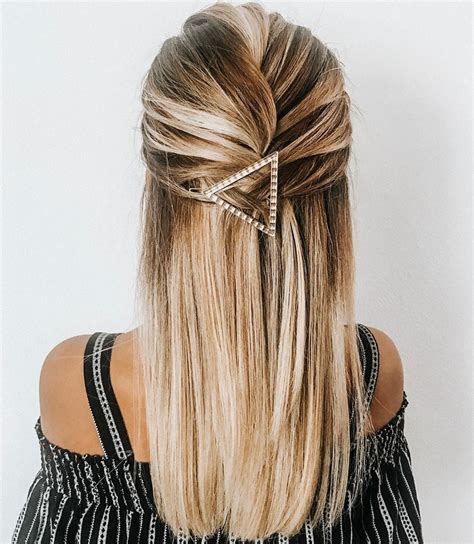Learn the significance of heat protectants and proper application techniques to prevent heat damage. Discover how to choose the best heat protectant for effective results.
Understanding Heat Damage
Contents
Heat damage to hair can occur when excessive heat is applied to the hair, causing the cuticle layer to become damaged and the hair to become dry, brittle, and prone to breakage. This damage can occur from using hot tools such as straighteners, curling irons, and blow dryers, as well as from exposure to the sun’s heat. The high temperatures can strip the hair of its natural oils and moisture, leading to dull, lifeless, and damaged hair.
Heat damage can also occur from using heat protectants that are not formulated properly or when they are not applied correctly. It is important to understand the potential risks associated with heat styling and how to effectively protect the hair from the damaging effects of heat. By understanding the causes and symptoms of heat damage, individuals can take the necessary steps to prevent and repair the damage to their hair.
When hair is subjected to excessive heat, the protective outer layer of the hair, known as the cuticle, can become damaged or even completely destroyed. This damage can result in the hair becoming weak and prone to breakage, as well as cause the hair to lose its natural shine and smooth texture. In addition, excessive exposure to heat can also lead to split ends, frizz, and overall lackluster and unhealthy-looking hair.
Understanding the signs of heat damage is crucial in order to take the necessary steps to prevent further damage. It is important to be proactive in protecting the hair from the damaging effects of heat to maintain healthy, vibrant, and beautiful hair. By comprehending the impact of heat on the hair, individuals can make informed decisions about the use of heat styling tools and products, and take the necessary steps to keep their hair in optimal condition.
The Importance of Heat Protectants
Heat protectants are an essential part of any heat styling routine. Whether you’re using a blow dryer, straightening iron, or curling wand, these tools can cause significant damage to your hair if not used properly. This is where heat protectants come in – they create a barrier between your hair and the heat, helping to minimize damage and prevent breakage.
Applying heat protectant before using any heat styling tool is crucial for maintaining the health and integrity of your hair. Without a protectant, the high temperatures from styling tools can strip your hair of its natural moisture, leading to dryness, frizz, and split ends. By using a quality heat protectant, you can help maintain the health and appearance of your hair, even after regular heat styling.
When choosing a heat protectant, it’s important to look for one that suits your hair type and styling routine. Those with fine or thin hair may prefer a lightweight, non-greasy formula, while those with thick or coarse hair might benefit from a more nourishing, moisturizing protectant. Additionally, if you frequently use heat tools, be sure to select a heat protectant with long-lasting benefits to provide ongoing protection throughout the day.
Proper application of a heat protectant is also crucial in achieving the best results. After choosing the right formula for your hair type, evenly distribute the product throughout your hair, focusing on the mid-lengths and ends where the most damage occurs. This will ensure that your hair is fully protected and that the product can work effectively to shield your strands from the heat.
In conclusion, the importance of heat protectants cannot be overstated. By incorporating a high-quality heat protectant into your styling routine, you can help minimize damage, maintain the health of your hair, and achieve the best results from your heat styling tools.
Choosing the Right Heat Protectant
When it comes to choosing the right heat protectant for your hair, there are a few key factors to consider. First and foremost, it’s important to identify your hair type – whether it’s fine, medium, or thick – as this will help determine the level of protection your hair needs. It’s also crucial to consider the type of heat styling tools you’ll be using, such as flat irons, curling irons, or blow dryers, as different protectants are formulated to withstand different levels of heat.
Another important consideration is the ingredients in the heat protectant. Look for products that contain silicone, which can help to create a barrier against heat damage, as well as proteins and vitamins to nourish and strengthen the hair. Additionally, consider whether you prefer a cream, spray, or serum formula, as each type offers different benefits and textures.
It’s also essential to read reviews and seek recommendations from hairstylists or friends with similar hair types, as they can provide valuable insights into which protectants have worked well for them. Keep in mind that price doesn’t always equate to quality – there are plenty of effective heat protectants available at affordable prices.
Finally, don’t forget to consider any specific concerns or preferences you may have, such as vegan or cruelty-free products, or those with added UV protection. By taking all of these factors into account, you can make a well-informed decision and choose a heat protectant that will deliver the best results for your hair.
Proper Application Techniques
When it comes to applying heat protectants to your hair, there are a few key techniques to keep in mind to maximize their effectiveness. One of the most important steps is to start with clean, dry hair. This will ensure that the heat protectant can be evenly distributed throughout the hair strands. It’s also crucial to section your hair before applying the heat protectant, especially if you have thick or long hair. This will allow you to target each section and make sure that the product is applied evenly.
Another important technique to keep in mind is to use the right amount of heat protectant for your hair type and length. Using too little product may not provide enough protection, while using too much can weigh your hair down and cause it to look greasy. It’s best to start with a small amount and add more as needed.
Once you have applied the heat protectant, it’s crucial to distribute the product evenly throughout your hair. This can be done by combing or brushing the product through your hair from root to tip. Pay special attention to the ends of your hair, as they tend to be the most damaged by heat styling.
After applying the heat protectant, it’s important to give it time to dry before applying heat to your hair. This will ensure that the product has fully absorbed into your hair and can provide maximum protection against heat damage.
Results of Using Heat Protectants
Using a heat protectant is an essential step in preventing damage to your hair from styling tools. The results of using a heat protectant can be seen in the overall health and condition of your hair. When using a heat protectant, you may notice that your hair is less prone to breakage, split ends, and dryness.
Furthermore, using a heat protectant can help to maintain the natural shine and smoothness of your hair. This is because the heat protectant forms a protective barrier around the hair shaft, preventing the heat from causing damage to the cuticle.
In addition to preventing immediate damage, using a heat protectant can also have long-term benefits for your hair. Over time, you may notice that your hair is less damaged and more resilient to heat styling. This is due to the protective properties of the heat protectant, which help to strengthen the hair and protect it from environmental stressors.
Overall, the results of using a heat protectant are healthier, more resilient hair that is better able to withstand the heat from styling tools. By incorporating a heat protectant into your hair care routine, you can help to maintain the overall health and condition of your hair, while still enjoying the benefits of heat styling.










